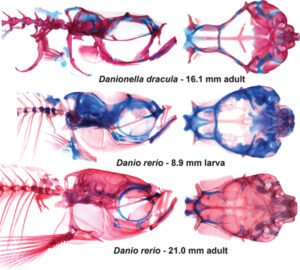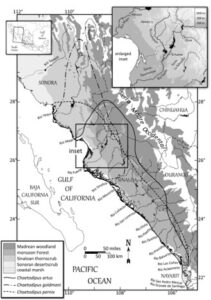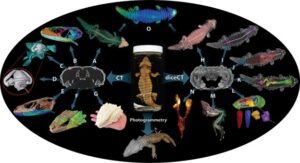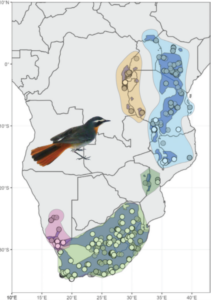Kevin W. Conway, Associate Professor and Faculty Curator of Fishes

My research program focuses on the morphology, taxonomy and phylogenetic relationships of select groups of freshwater and marine fishes. To date, most of my taxonomic work has focused on the hyper-diverse minnows and loaches (order Cypriniformes) and the clingfishes (family Gobiesocidae), resulting in the description of over 40 new species and multiple genera (see here for a complete list of new taxa). I am also a comparative anatomist and have a deep interest in vertebrate skeletal anatomy. I am particularly fascinated by the evolutionary phenomenon of miniaturization (the evolution of tiny adult body sizes) and its effects on the vertebrate skeletal system.
Lee A. Fitzgerald, Professor and Faculty Curator of Amphibians and Reptiles
My program is best described as evolutionary ecology and conservation biology of amphibians and reptiles. I use reptiles and amphibians as study systems at the community and landscape level to address the general questions, “What are mechanisms influencing the fit between organism and environment?”, and “How do community-level processes influence species persistence and distribution of species across the landscape?” This program addresses various conservation issues, for example, habitat requirements of single species, determinants of local and regional diversity, or mechanisms determining the fate of invasive and native species.
Jessica E. Light, Professor and Faculty Curator of Mammals

My research is focused on the evolution, systematics, and population genetics of mammals and other taxa. I am particularly interested in investigating cospeciation between mammals and their parasites to determine which factors are important in driving the associations between distantly related organisms. In general, our research relies on field work and specimens from natural history collections. We use molecular and morphological data from recently collected and historical specimens to help elucidate broad evolutionary processes operating in distantly related taxa. Please see my webpage for more information.
Heather L. Prestridge, Staff Curator

My primary role at the BRTC is to facilitate the accessibility of our specimens and their data. I oversee student interns, volunteers and workers in improving the collections. I also assist with field collections and preparation of specimens for a variety of research projects in collaboration with the Faculty Curators and have traveled across Texas and internationally to Italy, South Africa and Trinidad in support of their projects, enhancing the resources of the collections along the way. I maintain networks with our Texas Game Wardens, USFWS, wildlife rehabilitators and others to bring unique specimens to our collections.
Gary Voelker, Professor and Faculty Curator of Birds

Frontiers of Biogeography, 2024; 17.
My lab focuses primarily on developing molecular phylogenies of avian lineages, and using those phylogenies to address systematic and evolutionary-based questions. The lab is currently focused on the phylogenetics and historical biogeography of Old World thrushes, chats and flycatchers, particularly those found in Africa. An emerging interest is phylogeographic and specimen-based studies of broadly distributed African bird species that occupy different habitats along their latitudinal distributions. Fieldwork to collect samples occurs annually.
Mary K. Wicksten, Professor and Curator of Marine Invertebrates
I am studying the Thoridae, a family of small-sized marine shrimp that are remarkably diverse in the cold waters of the North Pacific. Evidence from my own work and that of Greg Jensen, University of Washington, suggests that not only have species been confused (one species is actually two, three species actually are only one) but the generic designation may depend on temperature-dependent features. With a small start-up grant from the Arctic Biodiversity Study, I am collaborating with Luis Hurtado, Department of Wildlife and Fisheries Science, to obtain some molecular data on genetic affinities within the Thoridae and potentially allied shrimp taxa. These data may at least indicate which of the supposed genera are distinct or even if the Thoridae is indeed a natural group. Examination of the 150 or more presumed species will begin following an assessment of the genera.

